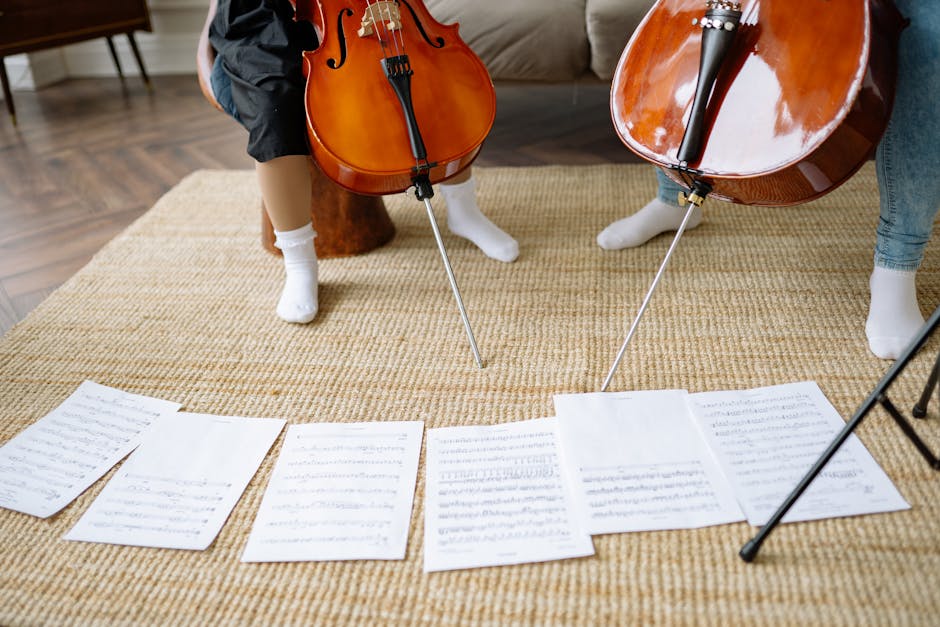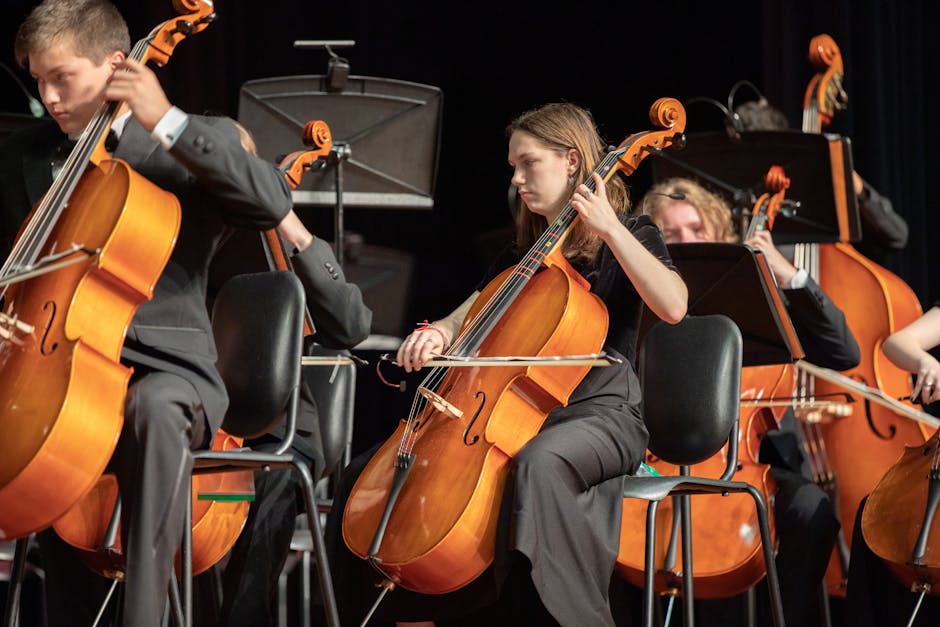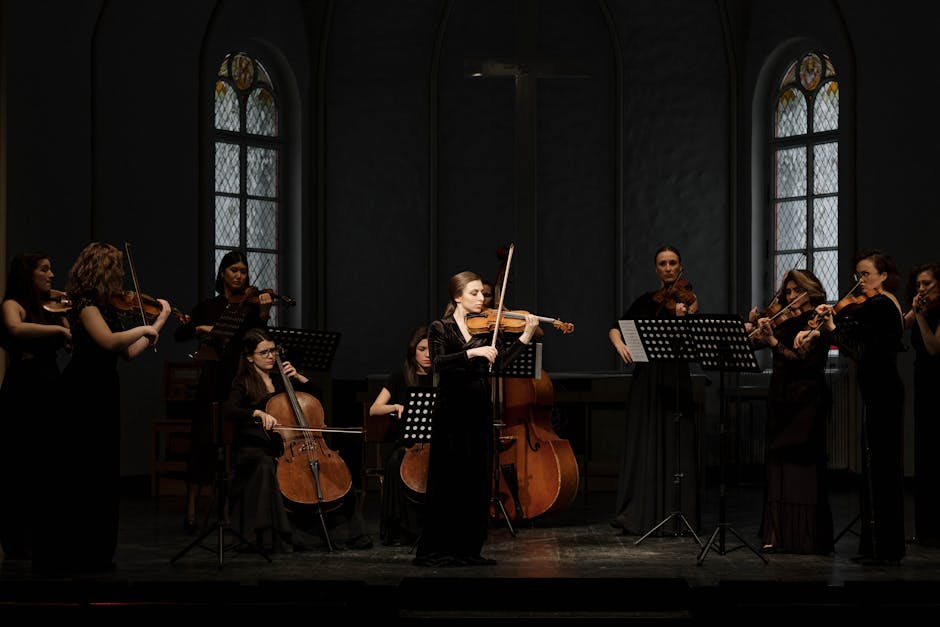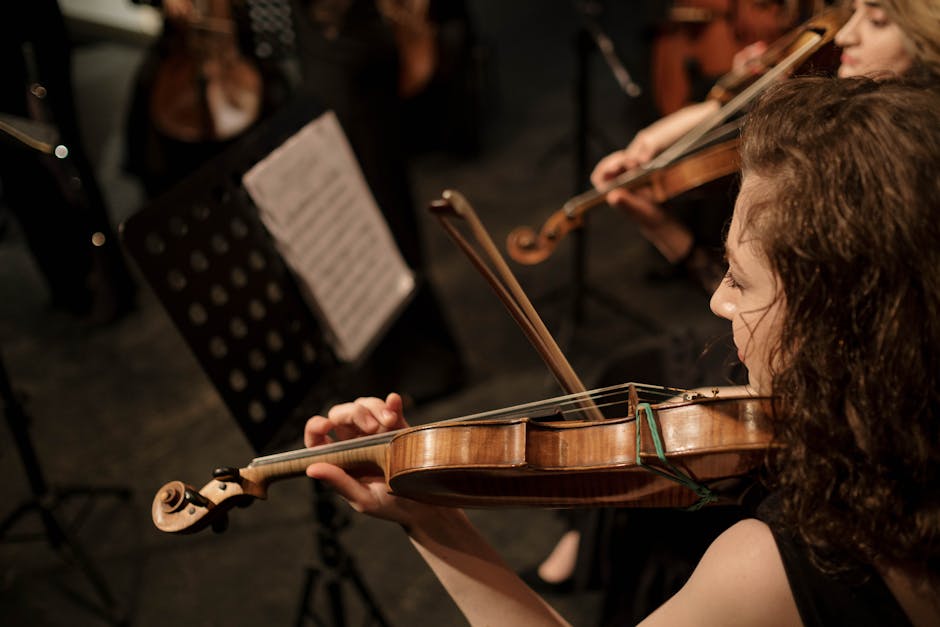When you sit in the opulent auditorium of a concert venue, all ears tuned to the stage, you are about to experience the profound synergy of sounds that is a symphony orchestra. The magic woven by a host of musicians emanates primarily from the heart of the orchestra – the string section.
String instruments, with their mellow tones and soft timbre, form the backbone of orchestral music. Known for their ability to produce a wide range of nuances, these instruments contribute to the overall depth and richness of an orchestra’s sound.
In this post, we will delve into the fascinating world of string instruments that add their unique color to a symphony orchestra. Identifying these instruments and understanding their roles can deepen your appreciation of the grand symphonic experience. The orchestral stage is set, let’s explore its key components.
Understanding the Role of Violins
In the lush landscape of a symphony orchestra, violins perform a prominent role.
Comprising as much as 30% of the orchestra, the violin section governs the harmony, rhythm and overall tone. They are often the bearers of the melody, given their rich range and expressive capabilities.
Divided into two sections—first and second violins, each carries different responsibilities. The first violins generally play the highest melodies while the second violins provide balance with countermelodies or rhythmic elements.
Their versatility allows violins to shine in both solo passages and collaborative roles. Skillful violinists weave intricate textures into the musical tapestry, ensuring the depth and resonance of the piece.
Understanding the role of violins reveals the breadth and depth of their contribution to the grandeur of a symphony orchestra. It also demonstrates the importance of quality instruments in achieving desired sound and harmony.
The World of Violas in Symphonies

In the sprawling realm of symphonic music, the viola often holds a steady, yet unassuming presence. This nuanced instrument shoulders the harmonic weight, filling the symphony space with lush, mellow undertones.
Unlike the high, sweet sounds of the violin or the deep rumble of the cello, the viola speaks with a restrained, velvety voice. It’s this characteristic richness that enables the viola to seamlessly weave together the symphony’s melodic threads.
Violas are typically larger than violins, requiring a slightly different playstyle. An integral part in symphony orchestras, violas create a unique balance. Serving a dual role, they both blend with the deeper string instruments and support the higher tones.
It’s no surprise to see that many composers, including Mozart and Hindemith, favored the viola. Its ability to braid harmony and rhythm together forms the backbone of any great symphony. Embrace the world of violas and enrich your symphony experience.
Importance of the Cello in Orchestras

The cello holds significant importance within the orchestra family. Known for its rich, deep and melancholic sound characteristics, the cello serves as the middle voice in the symphony orchestra.
It harmonically bridges the gap between the soaring violins and the robust double bass, providing a delightful equilibrium. Its flexible tonal range enables it to mirror both the lighter pitches of violins and the profound tones of double basses.
Cellos often play the harmony, reinforcing the symphony’s structure, but are equally stunning performing the melody, contributing soul-stirring solos. Their notes can pluck the heartstrings as powerfully as they pluck their own strings.
Essentially, without cellos, symphony orchestras would lack depth and fullness, making this instrument a crucial element to the rich, beautiful sound we associate with grand orchestral performances.
The Powerful Presence of Double Basses
In a symphony orchestra, the commanding resonance of the double basses is undeniably significant. This imposing force, seated at the back corner of the stage, provides the lower end of the harmonic foundation for the entire orchestra.
Double basses, often called simply ‘basses’, are the largest and deepest of the stringed instruments in an orchestra. With their deep, rich tones, these powerhouses are unparalleled in both volume and lower register.
What sets the double bass apart though is its unique tuning. Unlike other string instruments in the orchestra that are tuned in fifths, the double bass is tuned in fourths – much like a bass guitar. This singular configuration contributes to the robust and foundational sound it produces.
A symphony orchestra, be it classical or contemporary, would be utterly lost without the powerful presence of double basses. Despite their almost hidden location, their impact is monumentally echoic.
The Unique Sound of Harps

The harp, with its unmistakable grandeur and ethereal plucking, offers a unique allure in the symphony orchestra soundscape. Its design, which can constitute up to 47 strings spanning 6-and-a-half octaves, underpins its multifaceted tonal output. This range in pitch allows it to effortlessly integrate with both low and high registers of the orchestra.
Furthermore, the harp is possibly one of the most versatile instruments, capable of producing resonant single notes, luxurious chords, as well as sweeping, glissando effects that evoke a sense of magic and wonder. Its timbre, while genteel, carries enough resonance to cut through the full orchestral sound, making it a powerful tool during solos.
Crucially, the harp adds a unique colour-inducing depth and vibrancy that can profoundly impact an orchestra’s overall performance. This exceptional string instrument truly exudes a captivating sonic persona all its own.
Exploring the Rich Tones of Guitars

As we explore the diverse range of string instruments found in a symphony orchestra, the guitar may seem out of place. It’s not traditionally associated with an orchestra’s ensemble, but its rich tones have found a place in various compositions.
The guitar, typically the classical variant, lends unique warmth and resonance to a piece. The soft, mellow sounds offer an intriguing contrast to the sharp, high notes of violins or violas.
Also, its diversity in pitch and tone means it can blend seamlessly with other instrument arrangements, or project a stirring solo. Spanish influenced compositions, or orchestras imitating folk or pop music, frequently leverage guitars.
In specific compositions where the evocative charm and warmth of a guitar is needed, it doesn’t fail to deliver. So when you next listen to an orchestra, lend your ear to the rich tones of the guitar, they may surprise you.
Use of Banjo in Modern Symphonies

While the banjo may not be the first instrument to come to mind when considering a symphony orchestra, this stringed instrument has been increasingly utilized in modern compositions and arrangements.
Largely known for its definitive role in folk, bluegrass, and country music, it’s sound is now being explored within the symphony setting.
In particular, it adds a distinctive, plucky timbre to the orchestral palette which can provide a unique element to a piece’s overall sound.
Elements such as rapid, rhythmic picking, or a softer, more melodic approach, can color the tone of the orchestra, contributing complexity and contrast.
Further innovation sees composers using banjos for effects outside its traditional repertoire, pushing this humble instrument into the grand arena of the symphony orchestra.
Thus, the banjo, though not historically a common fixture, is finding a place in the diverse voices of the modern symphony.
Occasional Presence of Mandolins

While the sections of a symphony orchestra are predominantly made up of violins, violas, cellos, and double basses, occasionally, you might spot a unique string instrument tucked among them – the mandolin.
With its distinctive sound, this small, lute-like instrument adds a different tonal flavour to the orchestral blend. It’s not unusual to spot a mandolinist in works from the Romantic era or folk-inspired compositions.
Great composers like Beethoven and Mahler have even integrated mandolin parts into their symphonies. It might not be a permanent fixture, but when present, the mandolin certainly leaves an auditory imprint that shows its unique significance.
Next time you’re at a symphony performance, keep an ear out for the plucky tones of this uncommon but noteworthy instrument. You might just be surprised at the charm it can add to a harmonic symphonic texture.
Leave a Reply